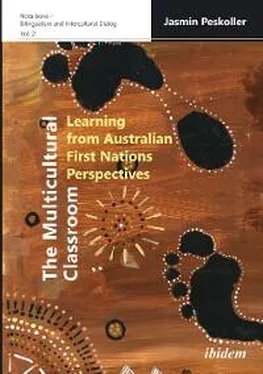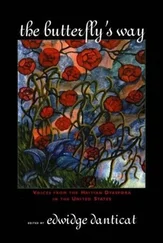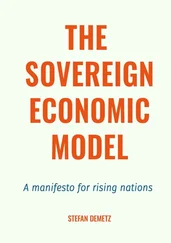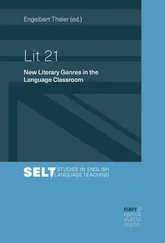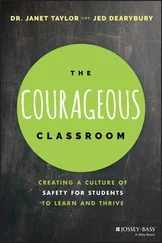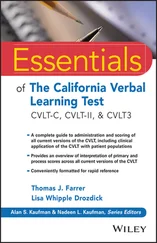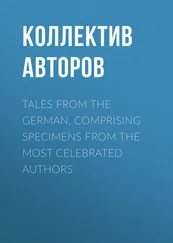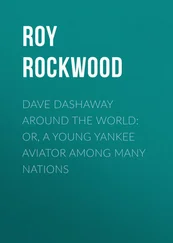Due to my role as a teacher and teacher educator, the aspect of cultural diversity and student heterogeneity inside classrooms has always been of particular interest and relevance to me, something my work with refugee students as well as my research project in Australia certainly amplified. Originally, my genuine interest in approaches to teaching and learning in multicultural classrooms with a specific focus on First Nations education was kindled through a case study I conducted at an Aboriginal school. I explored their methodologies as an assignment during my study-abroad semester in Sydney. Later, my work in a transition class for juvenile refugee students in Austria reinforced this interest and generated the desire to provide the necessary, evidence-based underpinnings for a more equitable education system and effective classroom practice through research. This book presents a research project which investigated the inclusion of First Nations perspectives in the multicultural Australian school setting.
Prior to the composition of this book, which is based on a Diploma Thesis at the University of Innsbruck, Austria, some insights into the research findings were presented at international conferences and published as proceedings papers (refer to Peskoller [2019] for a publication in English and Peskoller [2018] for a publication in German). However, this book presents and discusses the research project in its entirety and grants full access to the data obtained from the Australian educational context.
The inclusive term Indigenous Australian is used throughout the book to pay respect to people past and present who identify as Aboriginal and/or Torres Strait Islander, the two Indigenous groups in Australia. Moreover, as “[o]ne of the great mythologies of Indigenous education and educational research is that there is one singular, homogeneous entity of the ‘Indigenous Community’” (Philips & Luke 2017, 960), the denotation First Nations Australians proves beneficial as a way of acknowledging them as the traditional inhabitants, owners, and custodians of the land and sea, while simultaneously alluding to the great diversity within Indigenous Australia. If not specifically annotated, the term Aboriginal is also used with the same inclusive and appreciative reference.
In this introductory chapter, the background and relevance of the study is discussed and its approach and objectives are briefly illustrated through a presentation of the underlying research questions. Finally, a structure of the book is provided.
1. Background and Relevance
In this day and age, numerous individuals with increasingly diverse linguistic and cultural backgrounds meet and negotiate meaning on a regular basis. As the scope of multilingualism and multiculturalism within societies is increasing on a global scale, schools have developed into meeting places for a growing number of languages and cultures (Bierwirth et al. 2017). Consequently, discussions on the significance of including a variety of perspectives in classroom discourse and the imperative of ridding the latter of a prevailing monocultural straitjacket have emerged. Against the backdrop of these changing realities, authors have advocated for revisions and adaptions of current teaching methodologies and classroom materials in order to do greater justice to an increasingly diverse student population.
While certain areas of the world might have only recently experienced this global phenomenon, Australia’s society has always been characterized by multiculturalism. This reality derives from the fact that the country was initially inhabited by the already multilingual and multicultural First Nations peoples, constituting the oldest living culture in the world (ACARA, n.d.b), and evolved into an immigrant nation as a result of colonialization (Ellis, Gogolin & Clyne 2010, 441). More specifically, before European settlement started in 1788, at least 200 Indigenous languages were spoken throughout the country. Since many of these had regional dialects and varieties, an estimated 500 ways of speaking existed in Indigenous Australia. Unfortunately, due to processes of colonialization and atrocious policies of assimilation, fewer than 80 of these varieties have survived into the 21st century (Arthur 1996, 1). In 1978, Australia officially declared itself to be a multicultural nation (Liddicoat 2009, 190).
Today, First Nations Australians find themselves living a multilingual and multicultural life. On the one hand, traditional ways of knowing, being, and doing are still important for the maintenance of a strong sense of identity. On the other hand, showing an understanding of the dominant, non-Indigenous culture and being proficient English language speakers are essential requirements for Indigenous Australians to achieve success in society. For many Indigenous students, school education constitutes the main medium for becoming acquainted with the non-Indigenous language and culture.
As the development of high-quality materials and valuable approaches to teaching and learning constitutes a core endeavor in educational research, and due to the fact that multilingualism and multiculturalism have evolved into central characteristics of global societies and classrooms, this research study aims at providing insights from the learning context of Indigenous students in Australia, a country acclaimed for its linguistic and cultural diversity. Specifically, the project investigates factors connected with Indigenous Australian students’ linguistic and cultural backgrounds that are essential for their learning in school, identifies related challenges for everyday schooling, and sheds light on educational approaches which experienced educators in the field propose for multicultural classrooms. At the interface of the increasingly multicultural nature of classrooms across the globe and the insights from First Nations education in Australia, the findings should be relevant to all educators striving to support their diverse students’ learning as best as possible.
2. Approach and Objectives
The research project aimed at identifying language- and culture-related factors that experienced educators in Indigenous education perceive as relevant for Indigenous learners. The study also attempted to identify existing challenges in First Nations education and to collect effective strategies for considering First Nations perspectives in teaching materials and methodology. In order to obtain the desired insights, semi-guided interviews were conducted with experts in Indigenous education. Specifically, the questions guiding the qualitative study read as follows:
Which language- and culture-related factors do experienced educators perceive to impact Indigenous Australian students’ learning at school?
Which challenges exist in teaching and learning with Indigenous Australian students and how can Indigenous perspectives be incorporated in teaching materials and methodology?
Multiple perspectives were collated in the study as Indigenous and non-Indigenous teachers, teaching assistants, principals, and university lecturers shared their perspectives and experiences. Substantiated insights into the multilingual and multicultural learning context of Australian First Nations students were obtained. Based on the findings from this explorative study focusing on Indigenous Australia, strategies for teaching practice in multicultural classrooms in Australia and beyond can be derived. Hence, the outcomes and implications of the study should provide assistance to all educators in a day and age where linguistic and cultural diversity has become the global norm.
The book consists of six chapters:
Chapter 1: Introduction
An overview of the background and relevance as well as the objectives of the research study are given.
Читать дальше
